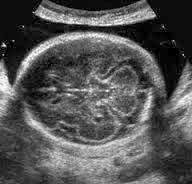New research in mapping the connectivity of the brain has shown that controlled deliveries of ultrasound can improve sensory perception in test subjects.
Ultrasound - echoing acoustic frequencies that are undetectable to the human ear - is already a common guidance tool for some animals, including bats and whales. As far back as 1929, experiments had shown that ultrasound affected the nerves, muscles and eyes of frogs and turtles.
Subsequent studies involving cats, mice, rats, rabbits and monkeys also revealed that controlled exposure to ultrasound could disrupt seizures or cause other controlled changes to brain function.
But this new study, conducted by scientists at the Virigina Tech Carilion Research Institute and published in the journal Nature Neuroscience, is the first to show evidence that focused, low-intensity ultrasound can have a positive, measurable effect on human brain function.
Researchers focused an acoustic beam of ultrasound at the area of the cerebral cortex responsible for processing sensory information from the hand in human volunteers. The scientists then stimulated the major nerve running through the arm by placing an electrode on the volunteers' wrists.
The responses in the volunteers' brains were measured using electroencephalography (EEG), and two traditional neurological tests were used to record how accurately the subjects could distinguish between the sensations of pins or puffs of air touching the skin.
Surprising findings
When looking at the EEG results from subjects receiving ultrasound, the researchers noticed that there was decreased activity from the brain waves associated with interpreting touch. But the results of the tests measuring sensation surprised the scientists - the performance of the volunteers exposed to ultrasound had significantly increased.These results seem like a paradox - how could the volunteers more accurately detect differences in tactile sensations when the brain waves responsible for decoding those sensations had been weakened?
Assistant Professor William "Jamie" Tyler, whose team conducted the study, says:
"We suspect that the particular ultrasound waveform we used in the study alters the balance of synaptic inhibition and excitation between neighboring neurons within the cerebral cortex.Moving the beam even a centimeter away from the original targeted brain region caused the effect to cease. This means that the ultrasound beam was accurate enough for scientists to be able to pinpoint and "tweak" specific regions of a patient's brain without affecting neighboring neural circuits.
We believe focused ultrasound changed the balance of ongoing excitation and inhibition processing sensory stimuli in the brain region targeted and that this shift prevented the spatial spread of excitation in response to stimuli resulting in a functional improvement in perception."
Promising implications for neurology
The researchers analyzed the results from 12 volunteers who were exposed to both correctly administered and "sham" ultrasound (where the equipment used to deliver the acoustic beam was flipped upside down to prevent the ultrasonic energy being transmitted to the heads of the volunteers).Although the scientists delivering the ultrasound beam knew which volunteers were receiving the "real" and "sham" ultrasound, the researcher processing the results did not, to prevent any bias in the outcome.
The improved sensory function in the volunteers is significant, because, as Tyler says, "In neuroscience, it's easy to disrupt things. We can distract you, make you feel numb, trick you with optical illusions. It's easy to make things worse, but it's hard to make them better. These findings make us believe we're on the right path."
Being able to precisely tweak different neural circuits without surgery allows scientists to more accurately map neural circuitry and help us understand how our brains work. This could aid in developing treatments for neurological disorders such as Alzheimer's.
Ultrasound is safe, too. Although ultrasound works mechanically, by pressing down on cellular membranes, at a low intensity it can be focused through a human skull without damaging brain tissue.
Although the results of the study do not mean that ultrasound will give us the radar-like senses of bats or whales, they do have promising implications for neurology.
Scientists are already able to modulate brain function in human subjects using magnets (transcranial magnetic stimulation) or by administering weak electrical currents (transcranial direct current stimulation), but ultrasound can potentially provide much more accurate results.
"The work by Jamie Tyler and his colleagues is at the forefront of the coming tsunami of developing new safe, yet effective, noninvasive ways to modulate the flow of information in cellular circuits within the living human brain," says the Institute's Executive Director, Michael Friedlander.
"It arms the neuroscientific community with a powerful new tool to explore the function of the healthy human brain, helping us understand cognition, decision-making, and thought," he adds.
Source: David McNamee
Copyright: Medical News Today
Not to be reproduced without the permission of Medical News Today.


0 comments:
Post a Comment